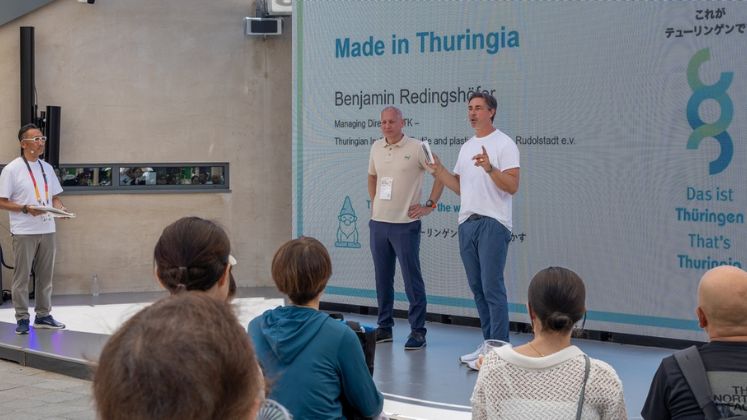
In terms of textile recycling, the TITK Rudolstadt is venturing into completely uncharted territory. The Thuringian Research Institute recently unveiled a polo shirt composed of triple-recycled cellulose fibre at the World Expo in Japan. The fibre is Lyohemp®, the first lyocell fibre derived from hemp pulp and a TITK innovation.
At the Expo in Osaka, TITK Managing Director Benjamin Redlingshöfer wore the polo shirt himself. Redlingshöfer flaunted the “300% Recycling” print on his polo shirt. For the first time, the fibre used to make the shirt has completed three successive processing steps, making it easy to turn into a stylish polo shirt with the best wearing qualities.
“With our 300% recycled fibre, we demonstrate that closed textile recycling cycles are feasible thanks to our technology,” Redlingshöfer states. “This innovation proves that we can take recycling in the textile industry to a whole new level.”
When textiles are recycled, it’s usually through a process called downcycling. This indicates that lower-quality textile items are made from recycled high-quality textile fibres. Even in these recycling cycles, though, a greater percentage of virgin material is frequently combined with only 20 to 40% recycled material.
However, the goal of TITK’s fibre-to-fibre recycling program is to produce a recycled fibre from a premium textile fibre that has the same high degree of quality and performance characteristics.
“The TITK has now impressively demonstrated that not only is 100% recycling of cellulose fibres possible, but that this process can even be used three times in a row without having to compromise on desired fibre characteristics such as a pleasant, soft feel, a slight lustre, and very good, even dyeability,” Redlingshöfer says.
In addition to separating the two material streams of synthetic and cellulosic fibres and recombining them into a material grade for fibre spinning (fibre-to-fibre recycling), TITK researchers are now using the results of the Lyohemp® recycling project to polycotton textiles.






